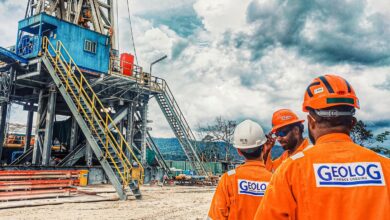Cuba, experienced partners ready for deepwater responsibilities

“Companies active today in Cuba are very well experienced from the stewardship point of view,” professor Jorge Pinon of Florida International University said at the 2011 IADC Environmental Conference & Exhibition held 12-13 May in Port of Spain, Trinidad. “Let me assure you that whether it’s Petronas, ONGC or others, they do have a track record of how to behave.”
“Also, the Cubans know a lot more than we think the Cubans know. They have partnered themselves with a group of companies that are seasoned in deepwater operations,” he said.
Working first in conjunction with Repsol, ONGC and Statoil, Cuba will begin drilling a commercial deepwater well this year to be followed by six additional deepwater wells, according to Cubapetroleo, the Cuban national oil company. Cubapetroleo has drilled approximately 400 wells off the Cuban coastline, these being drilled directionally from land rigs. The deepwater aspect of the drilling program is what’s new.
Hydrocarbon activity in Cuba dates back to before 1881, when a natural naphtha field was discovered near the city of Motembo in the central part of the country. Naphtha is a liquid used as a solvent for various chemical industries. Limited exploration took place up to 1960 and resulted in the discovery of a few small oil fields. With the formation of Cubapetroleo, exploration activity increased. The largest field, Varadero, located in the North Cuban Heavy Oil Belt, has estimated in-place reserves of about 3 billion barrels, according to Cubapetroleo.
Since 1999, numerous directional wells have been drilled close to shore and achieved production of more than 1,500 bbl/day and in some cases up to 5,000 bbl/day.
Cuba today produces a little over 50,000 bbl/day of liquids, both crude oil and natural gas liquids (NGLs). Demand for oil in the country is about 140,000 bbl/day, and approximately 90,000 to 100,000 bbl/day of crude is imported, according to Mr Pinon. The James Baker Institute predicts that within 15-20 years Cuba may double its consumption of oil to 300,000 bbl/day, driven mostly by demand for fuel oil.
“Many people fail to realize that Cuba’s production today is heavy oil between 8° and 12° API,” Mr Pinon said. “The recovery factor is less than 10%.”
The deepwater prize is located in the 112,000 kilometers Cuban Exclusive Economic Zone (EEZ) in the Gulf of Mexico (GOM), which was opened to foreign investment in 2000. It is divided into 59 2,000-sq-km blocks; the average water depth is 1,400 meters. A total of seven companies are now involved in the deepwater EEZ, with 24 blocks under contract. Saipem’s Scarabeo 9 semisubmersible rig is set to drill all of the deepwater wells.
The start of the deepwater initiative began in summer 2004 when the first exploration well in the deepwater area, Yamagua-1, was drilled in 1,660 meters of water to a depth of 3,410 meters.
The United States Geological Survey estimate of 5 billion bbl of undiscovered liquid reserves, primarily in the North Cuba thrust belt, does not include the Eastern Gap area of deepwater reserves, according to Mr Pinon. There are estimates that the Eastern Gap area and the area just below it, the further northwest GOM, could have 5 to 10 billion bbl of additional undiscovered reserves.




